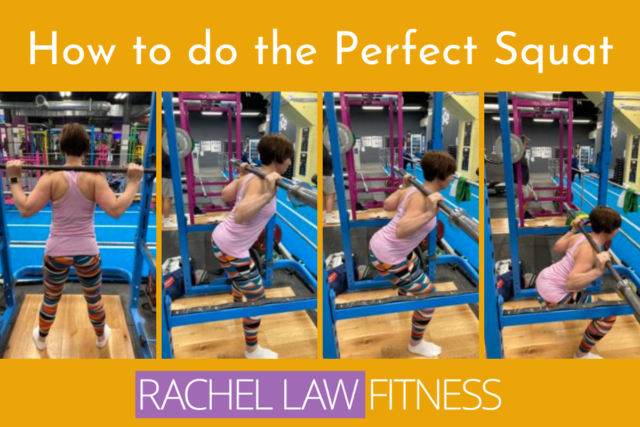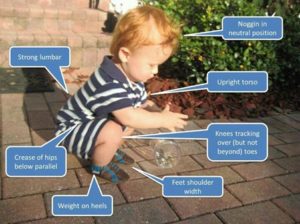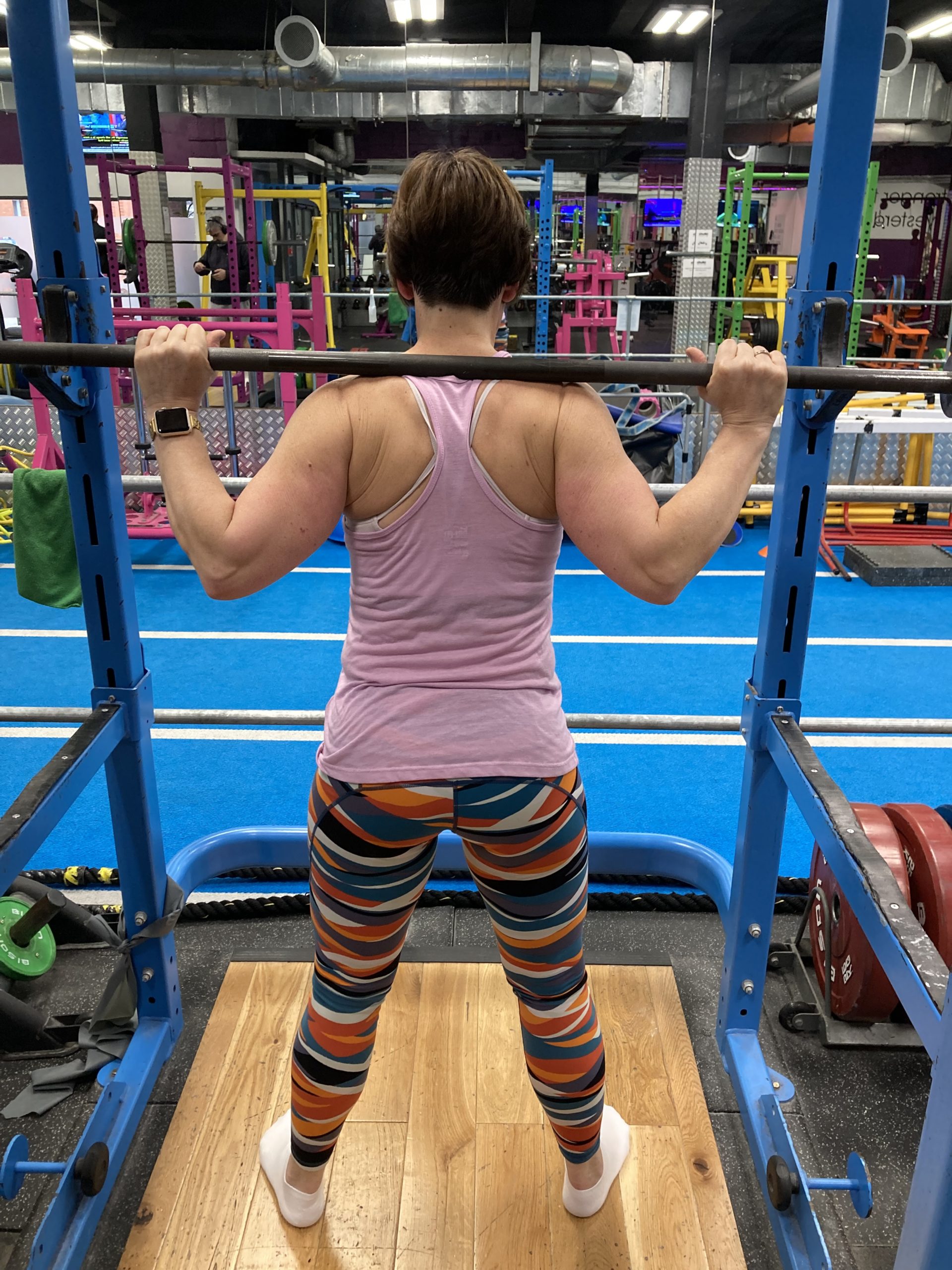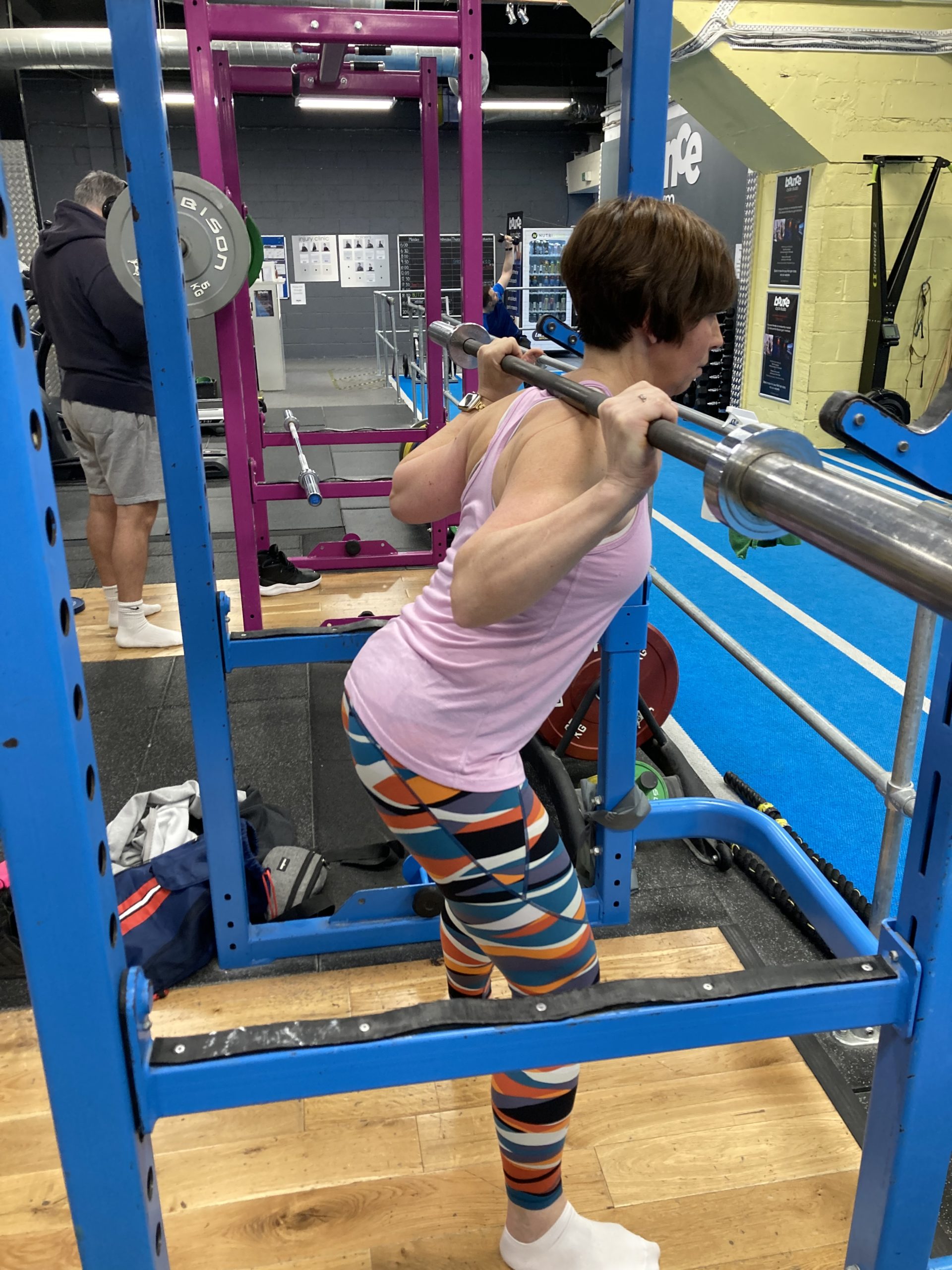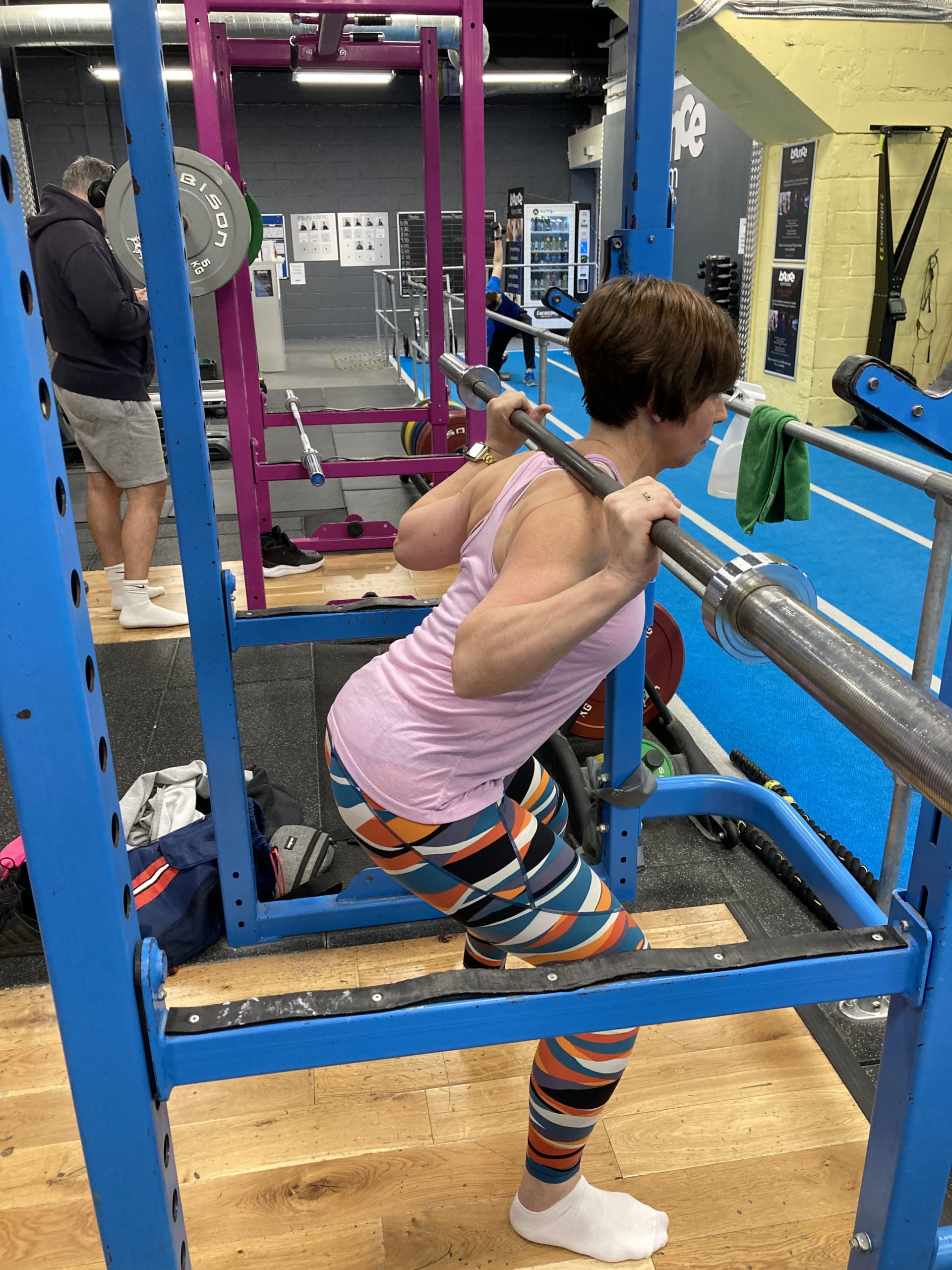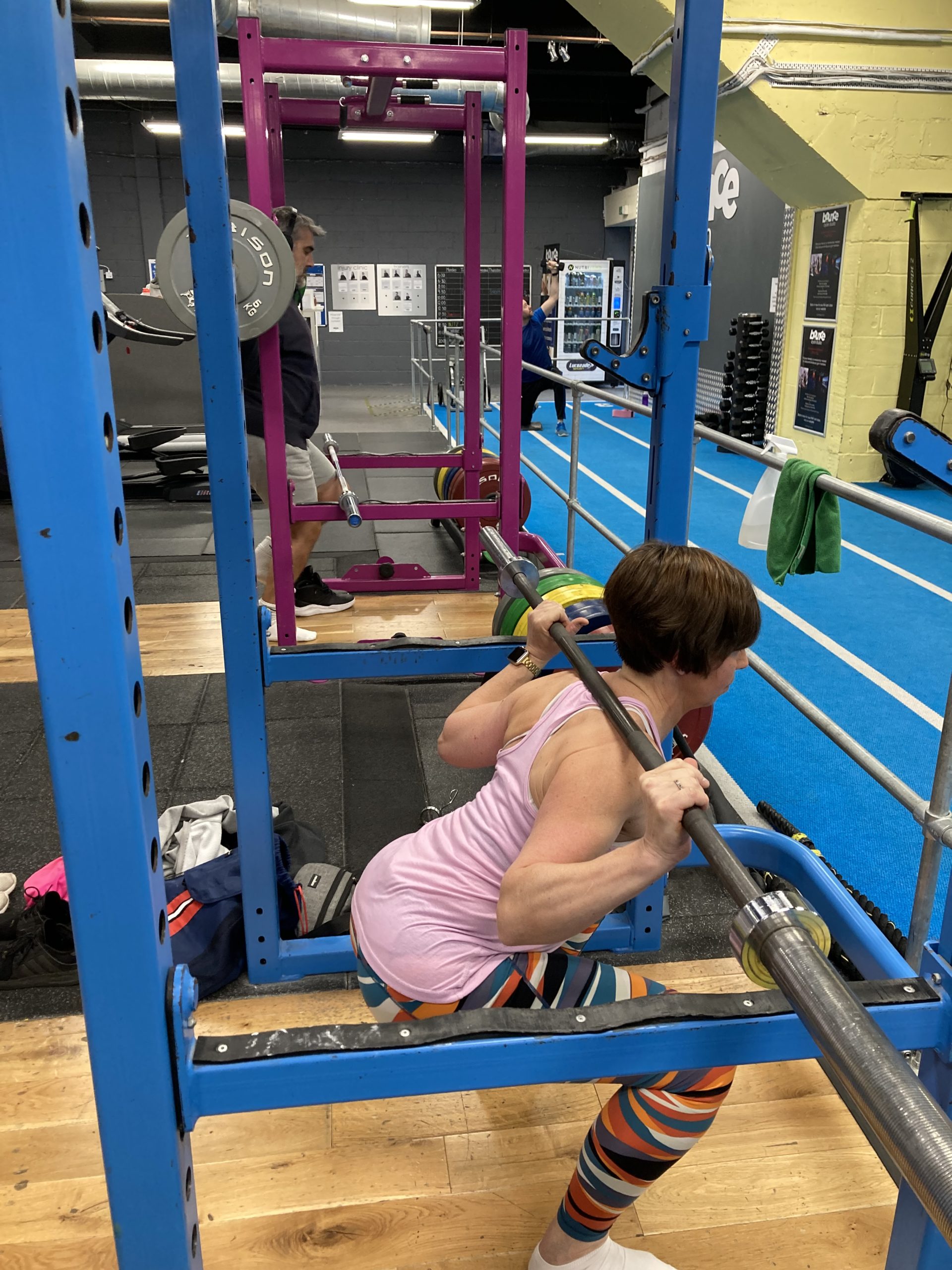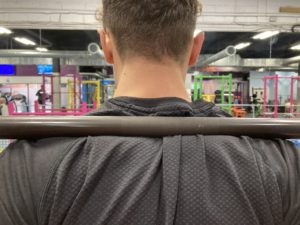Squats are one of the most functional movements in our lives
We’re designed to squat!
We’ve been squatting since we were babies. If you ever watch toddlers move, you’ll notice that they perform picture-perfect squats.
As we get older and sit in unnatural positions all day, our squat technique goes from perfect to terrible!
Squats are a compound movement that recruits many muscles groups and joints to complete
- The primary muscles involved in the movement are your quadriceps (the muscles in the front of your thighs) and your glutes (your butt muscles)
- On the eccentric (lowering) part of the move, the muscles in your hamstrings and your hip flexors fire too.
- Squats also work the muscles around the knee, which helps build strength and prevent injury
- In addition to your leg muscles, you need your hips, back, core, shoulders, arms
How to Perform a Perfect Squat
1: Set up Stance Correctly
- Stand with your feet slightly wider than your hips.
- Toes pointed slightly outward – about 5 to 30 degrees outward
NOTE: There’s no set rule for the exact positioning of your feet. It varies depending upon anatomical differences. The degree to which you turn your feet out will on individual comfort level and mobility.
- Look straight ahead and pick a spot on the wall in front of you.
- Look at this spot the entire time you squat, not looking down at the floor or up at the ceiling.
- Chest up and proud
- Spine in a neutral position
2: Weight is on your feet
- Weight should be on the heels and the balls of your feet as if they were pasted to the ground.
- Screw your feet into the ground to create stability and help keep the arches from collapsing (which can make your knees more likely to cave inward when you squat)
- You should be able to wiggle your toes the entire movement. However, keep the whole foot on the floor as the big toe is integral to glute engagement.
NOTE: One of the most difficult things you need to master for a proper squat is to keep the weight on your heels and push off them. Many beginners tend to travel forward with the weight coming up on their toes, rather than heels. Squatting barefoot allows you to make the mind-muscle connection faster and learn the crucial cue.
3: Brace the Core
- Breathe in
- Keep your entire body tight the whole time, your core flexed like you’re bracing to be punched in the gut
4: Execute: Eccentric Phase
- Break at your hip and push your butt back.
- It’s important to start with your hips back, and not by bending your knees.
- Keep sending your hips backwards as your knees begin to bend.
- Focus on keeping your knees in line with your feet.
- Make sure your knees aren’t moving inward toward each other through the movement – this is very common.
NOTE: Forget the old rule that your knees should never extend beyond your toes. This can happen due to anatomical differences in your bone length. Trying to restrict that movement can make you lean forward more, which can stress your lower back (Journal of Strength and Conditioning Research.)
5: Squat down until your hip joint is level with your knees
- There’s lots of discussion about how low you should squat, but the average exerciser should aim to hit parallel depth with their squats, so the back of your thighs will be parallel to the floor.
NOTE: Some people have difficulty getting to parallel because of lack of mobility or injury.If that’s the case, it’s better to end the squat at whatever depth is pain-free However avoid defaulting to quarter-squats because you are using too much weight. Less weight and performing the full range of motion for the move is optimal.
6: Execute: Concentric Phase
- Once at the bottom, it’s time to stand back up from your squat
- Keep everything tight
- Exhale
- Drive through your heels, keeping the balls of your feet on the ground as well.
- Make sure your feet stay planted throughout the duration of the squat. This will fire up your posterior chain—the muscles in the back of your body, like your hamstrings and glutes
- Drive your knees outward (away from each other) the same way you did on the way down, and squeeze your glutes at the top
7: Finish strong
- At the top of the squat tuck your pelvis into a neutral position
- Be careful not to hyperextend by pushing the hips too far forward. This can make you lean backward and stress your lower back.
PUTTING IT ALL TOGETHER: GOOD SQUAT TECHNIQUE
Here’s a video of me demonstrating good squat technique with a barbell.
BARBELL SQUAT RACK POSITION
Take the bar out of the rack with it resting on your rear shoulder muscles.

Rachel Law is a personal fitness trainer based in New Malden, Surrey. Qualifications: ActivIQ Level 3 Personal Training; Burrell Education Pregnancy Exercise Prescription; Burrell Education Advanced Pregnancy Wellness Practitioner; Burrell Education Advanced Post Natal Exercise Prescription; Burrell Education 3rd Age Women Optimal Health and Nutrition; Burrell Education Peri Natal Athlete; Burrell Education Pelvic Flow and Freedom; Olympic Weight Lifting; Premier Global Kettlebells; FIE Level Assessment and Mentoring

